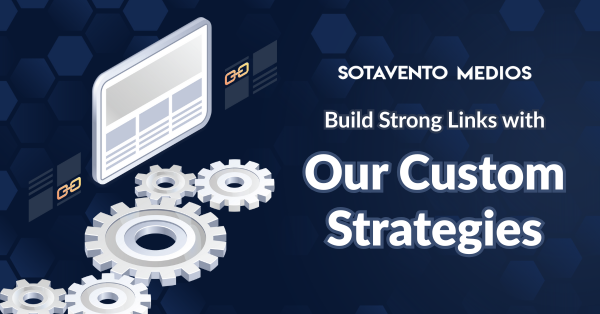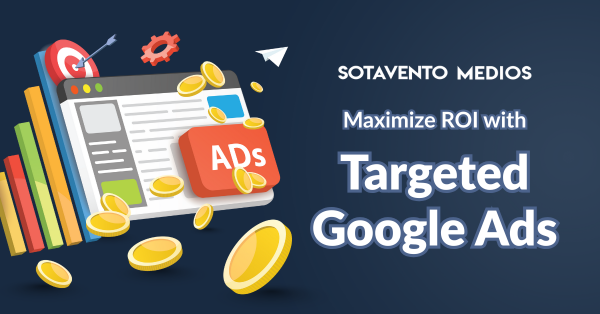The world of search has shifted from text-based querying to multimodal, AI-driven discovery. For B2B strategists and technical SEO experts, the task is no longer just about getting a URL to rank. It’s about becoming a trusted source for an Answer Engine or providing direct responses in Visual Search results. This change emphasizes the importance of mastering Visual Search AEO (Answer Engine Optimization).
At Sotavento Medios, we understand that the pixels on your page—your images and videos—are essential data. These elements are high-value, parseable data that Large Language Models (LLMs) and Multitask Unified Models (MUM) interpret to deliver instant answers through tools like Google Lens, Pinterest Lens, and AI Overviews. Not optimizing your visual assets for this environment can lead to significant crawl and visibility issues.
The Technical Imperative: Why Visuals are Now Data Sources
The heart of Visual Search AEO involves helping AI crawlers and LLMs grasp the meaning and context of an image or video, rather than just its file type. The days of using basic, keyword-stuffed alt text are gone. Modern AI systems examine the entire page—headings, body copy, structured data, and visual metadata—to assess the content’s relevance, authority, and trustworthiness (E-E-A-T).
Contextualizing the Asset for AI Systems
Traditional SEO taught us to describe the image. AEO requires us to explain the purpose and context of the image in relation to the article’s goal.
- Smart Alt Text: Alt text should be written in natural, conversational language, not robotic jargon. If an image shows a complex technical architecture, the alt text must clearly explain the visual’s role: “Diagram illustrating the four-stage microservice architecture for scalable cloud deployment.” This helps provide the necessary semantic signal for AI summaries.
- Descriptive Filenames: Keep using descriptive, hyphenated filenames (e.g., saas-onboarding-flowchart.webp instead of img_0045.jpg). This practice serves as a strong keyword indicator for both older indexers and modern systems.
- Surrounding Copy and Captions: The text next to the visual asset is a vital contextual signal. Ensure that image captions and adjacent paragraphs clearly support the topic and purpose of the visual. A product image of a high-spec server should have text discussing its performance metrics, linking the visual to the page’s claims.
Advanced Technical SEO for Image AEO
True AEO demands strong technical implementation that goes beyond surface-level tactics. This includes providing clear, machine-readable instructions to crawling algorithms.
1. Structured Data Implementation
Schema markup is the best way to signal to an Answer Engine. Specific markup types are essential for high-intent search results involving visual assets:
- Product Schema: For e-commerce or B2B product pages, wrapping the hero image in Product schema allows AI systems to display the image with product details like price, availability, and reviews in rich results or AI-generated buying guides.
- ImageObject Schema: This detailed schema describes the image (creator, content location, license) and is crucial for high-authority visual content, especially in fields like engineering, finance, or medical research, where credibility matters.
- HowTo and FAQPage Schema: If an image or video is part of a step-by-step guide or an answer to a common question, embedding it in the relevant step or answer section of this schema helps AI extract the visual as the direct answer to a user’s query.
2. Performance and Indexability
AI Overviews and Visual Search results focus on fast, high-quality experiences. Technical issues in image delivery can hinder AEO.
- Next-Gen Image Formats: Switching from older formats like JPG and PNG to modern compressed formats like WebP or AVIF greatly improves page speed, aligning with Core Web Vitals (CWV) and Google’s mobile-first indexing rules.
- XML Image Sitemaps: Make sure all images meant for visual search are included in a dedicated Image Sitemap. This ensures they can be discovered, especially for new or deep-page content that standard crawl paths might miss.
- Responsive Design and Lazy Loading: Images need to load correctly and quickly on mobile devices. Use responsive image tags (<picture> element or srcset attribute) and strategic lazy loading to enhance initial page rendering without compromising the complete visual experience.
Video Optimization: The New Frontier of Answer Delivery
Video is quickly evolving from a tool for driving traffic to a direct answer format. AI search results, especially for process-oriented queries, increasingly feature short video clips.
1. Structuring Video for AI Extraction
To make a video readable by an LLM, you should add contextual time markers and clear content sections.
- Use Clip and VideoObject Schema: The Clip schema is vital, allowing you to mark specific time segments within a video that answer exact questions or process steps. This lets Google take the user directly to the 0:45 mark to show “How to configure the API key.”
- Comprehensive Transcriptions and Subtitles: Provide full, accurate transcripts. These transcripts are text content that the Answer Engine can crawl, index, and use. Ensure the transcription is synchronized and includes relevant long-tail AEO keywords that match conversational queries.
- Chapter Headings: On platforms like YouTube (which Google heavily relies on for video AEO), define chapters with clear, question-based titles. This follows the best practice of using question-based H2/H3 tags in text articles.
2. Alignment with Conversational Search Trends
The rise of conversational search means users ask complex questions like, “What are the steps to implement a zero-trust network, and what does the dashboard look like?” A combined Visual Search AEO approach meets this demand:
- The text delivers the structured answer (AEO).
- The image (e.g., a dashboard screenshot with ImageObject schema) provides visual context (Visual Search).
- The video shows the dynamic how-to process (Video AEO/Clip Schema).
This strategy ensures your content can meet the multimodal needs of modern searchers, gaining visibility in AI Overviews, Visual Search tabs, and organic rich results.
Securing Your Brand’s Authority in AI Discovery
The future of digital visibility depends on making your content readable by machines. Visual Search AEO isn’t just another marketing channel; it’s a crucial part of technical SEO that ensures your brand’s expertise is selected by the key players—the Answer Engines.
By switching to natural language alt text, using detailed structured data, and segmenting video content with Clip schema, you shift your strategy from just chasing traffic to becoming a trusted source for AI-powered knowledge.
Are you ready to prepare your technical setup for the AI-first web? Sotavento Medios offers high-quality technical SEO audits to align your visual assets and content structure with Answer Engine Optimization requirements. Contact us today to schedule your AEO assessment.

















